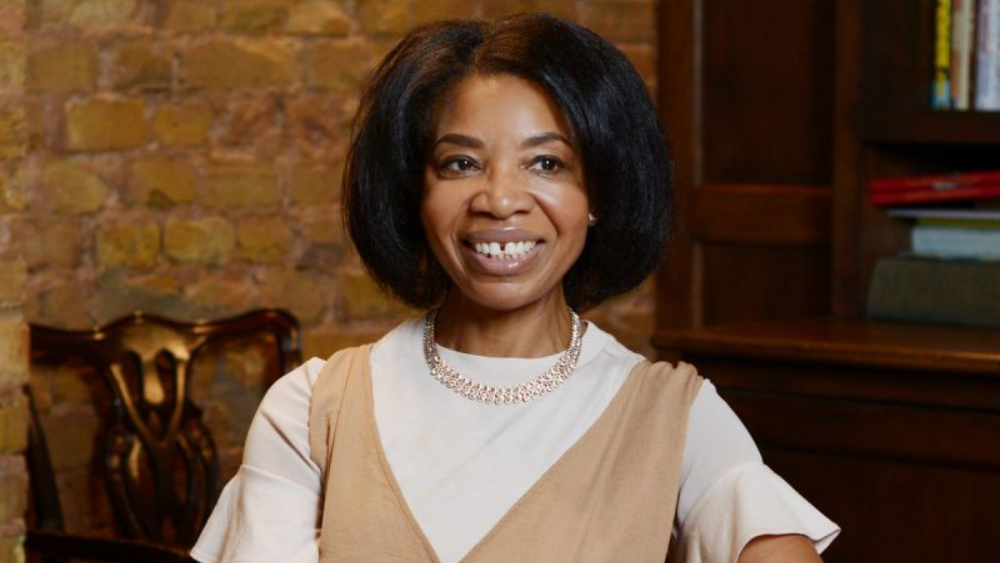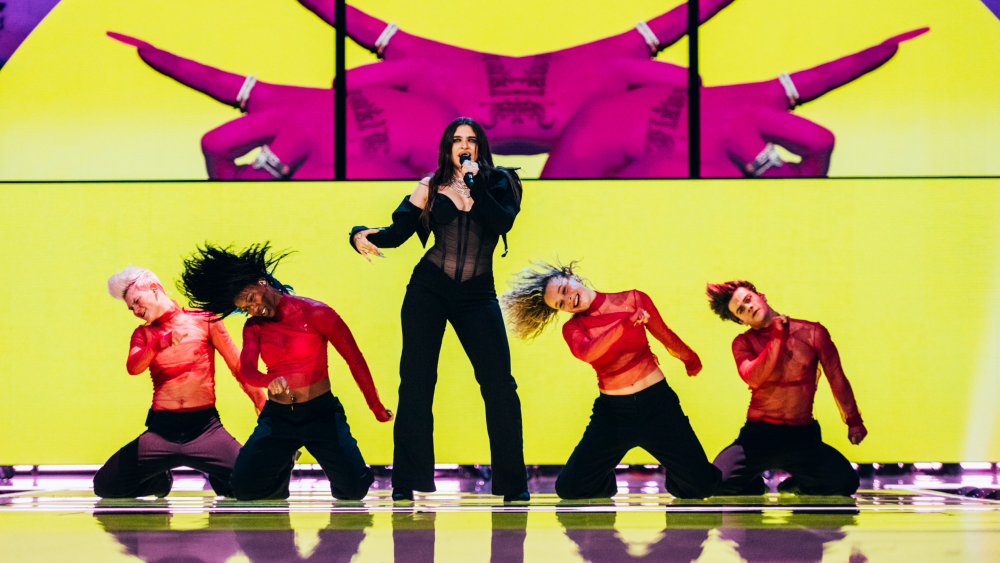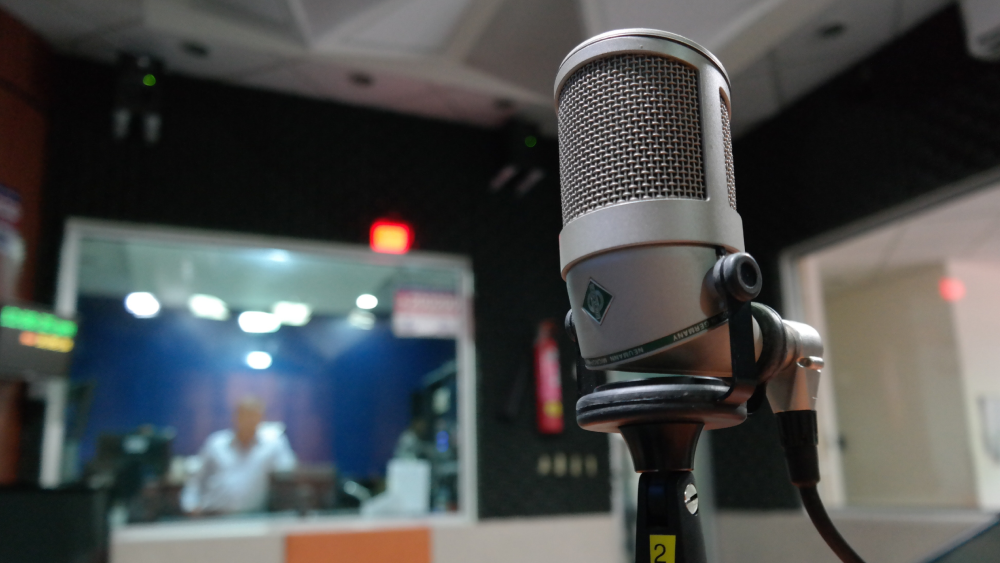Later this week, he will showcase his new work, Variazioni Tiepolo at the Southbank Centre, London.
The premiere will be performed by the two violinists from the Minguet Quartet (pictured below), who will share the movements between them.
Roberto’s work is a musical journey acting as a commentary to the collection of Giovanni Battista Tiepolo sketches, the Capricci-Scherzi, housed at the British Museum.
Here, he tells us about his creative process and the challenges he faces when bringing his visionary works to the stage.
How did you set about creating your new piece for the Minguet Quartet?
The work has been commissioned by Olga D’Alesio, the generous and enlightened patron – mecenate – behind this endeavour. As a violin player she wanted to honour her passion and devotion to l’arte di tocare l’istrumento by commissioning a work connected to the baroque tradition of the solo instrument works, yet still modern and current.
There were so many impressive violinists to consider for the premiere, and Olga and I both agreed on working with the two lead violinists of the Minguet Quartet. They are true artists and have also premiered my last two string quartets: we really respect one another. Annette Reisinger and Ulrich Isfort became instrumental to the research and development of the work that, from the very beginning, has been inspired by the Scherzi di Fantasia of Giovanni Battista Tiepolo (currently housed at the British Museum).
What was the thinking behind it?
Variazioni Tiepolo is inspired and directly connected to the Scherzi di fantasia sketches of G.D.Tiepolo. It has been commissioned to re-engage the audience with the concept of alchemy and sprezzatura, typical of the baroque era.
Subdivided into four blocks, the variations resemble and are connected to the alchemic processes of Nigredo, Albedo, Citrinitas and Rubedo. The work has been written for solo violin with scordatura, which includes two themes and thirteen variations. Annette and Ulrich will be sharing the task of interpreting this work. Annette will perform the first and fourth movements, while the second and third will be perform by Ulrich. The work is a summa of solo virtuoso violin pieces and techniques - whilst being challenging it is also highly entertaining.

As in my other works for solo instrument, I always face three main challenges:
Virtuosity of the creation in order to showcase the talents of the performer who must enjoy their playing and thrill the audience while doing it.
The work must be educational, explorative and showcase new techniques, or push the boundaries of the instrumental playing a little further than previous works (this can happen also poetically and not only technically).
The composition must have some magical aspect behind in order to evoke a sense of wonder, almost as if the soloists become a sorcerer or a warlock and hypnotize the audience with their playing.
How do you feel now it’s ready to be performed?
Every performance is an exciting new discovery: all the nuances, colours and features finally come together to my perception. It is a very intimate and private moment, even if it happens in public. It is an epiphany: after having been nurtured and developed underwater, the organism that grew in my private underworld unfolds its wings and flies away, free and independent. In many traditions, a group of few enlightened human beings support, with their action, the existence of our world: I hope my sound helps them get in tune!
What I fear most is the actual moment of the performance because I know soon after I will be very sad, and wander melancholic looking for something else to write and create, a new sound universe to explore.
During every general rehearsal I have realised I cannot stand continuance. No sooner than my solo work, chamber piece or opera becomes audible do I wish for something quite different, and have the tendency to sweep it all away – ‘Caminante no hay camino’ (‘Wayfarer, there is no way’). I guess my craftsmanship is nothing but the attempt to catch a particular moment, one particular resonance, a strong musical emotion, a momentary perfection of the living sound and make it everlasting … I cannot do it though, I think I would irremediably destroy it, if I were to accidentally achieve it!
How did you first get into composing?
I started composing when I was six, well before I began studying composition. My grandfather, who was blind, taught me how to play and improvise by ear; this facilitated my interest in creating my own works and developing an individual approach.
My formative tuition has been really thorough, so I learned how to copy everything: Gregorian chant, fugue and counterpoint in many styles, piano sonatas, quartets etc. I was already an encyclopaedia of styles, somewhat, at the end of my studies. After, I studied all the major so-called contemporary masters (Nono, Berio, Sciarrino, Ligeti and Grisey) so I was really a caged bird in the middle of my career.
Working in the commercial cinematic business and studying electronic music really helped me ‘loosen up’. I honestly have to admit that I have only really found my unique voice in the last five years. Before, I was just a conundrum of influences. I am a free man now, and that is why I constantly say: no contemporary composer here, just a craftsman wondering in the world of sounds.
What have you learned along the way?
I have learned that the real challenge has and will ever been only one: to get a commission, especially for the larger and more audacious works. Some people are very lucky because they come from a wealthy environment, they are very well connected and so they never need to leap over this hurdle. There is a reason why Mozart, Beethoven, Schubert and Wagner - Parker, Mingus and Monk struggled all their life to make a decent living and died in misery. To deliver true art you must somehow immolate yourself to the muses, the glory sometimes is given by history, but we should not care about it.
Who or what has been your biggest influence?
There have not been many honestly; being taken to listen to Nono’s Prometeo at San Lorenzo Church, with Claudio Abbado and Experimental Studio was a shock at my young age. I said to my grandfather: ‘these are warlocks not musicians!’ Of course, studying conducting with Carlo Maria Giulini was also a real life changing experience, but I guess my real and long lasting love has always been and will ever be the music of the polyphonic masters in Basilica di San Marco: Adrian Willaert, and Giovanni and Andrea Garbieli, the masters of cori spezzati and cori battenti. The voices, the resonances, the words and the organ’s subtleties travelling across space and time have always been a spiritual journey for me. Still nowadays I would love to write a choral work for choirs and surround sound in a large ritualistic iconic space like Artangel or the Roundhouse. Music is a journey of the soul.
What’s next for you?
Aurora: a new opera, with libretto by Laura Turner, an amazing writer who worked with me and the Almeida Participation Team. It will be a fully immersive music dance theatre work even more radical than my recent work Dionysos Rising. Dionysos Rising sold out at its January world premiere in Trento, and will run from 20 to 22 September in Vienna at Museumquartier. I am also hoping that it will see its US premiere in the Big Apple for Contemporary Opera.
Minguet Quartet: Music Alchemy takes place on Friday, 17 May, at Purcell Room, Southbank Centre, London. For more info and tickets, see https://www.southbankcentre.co.uk/whats-on/130064-minguet-quartet-music-alchemy-2019





